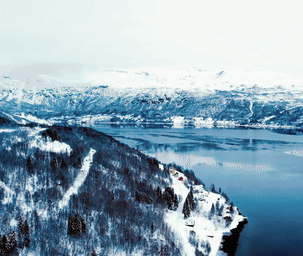New research questions effectiveness of submerged cages in lice control strategy.
New findings from the Norwegian Institute for Nature Research (NINA) and the Norwegian University of Science and Technology (NTNU) suggest that salmon lice densities may be higher at depth than near the surface, potentially challenging one of aquaculture’s key mitigation strategies.
The industry has in recent years invested heavily in submerged cages to protect fish from sea lice, based on the assumption that lice larvae concentrate near the surface. However, the new research indicates that this vertical distribution may be more complex.
“We’re seeing indications that lice density may be greater at 12 and 18 meters than at 2 or 6 meters,” said Frode Fossøy, senior researcher at NINA. “This challenges some aspects of current thinking.”
The team used newly developed passive lice traps capable of taking simultaneous samples at multiple depths in Hardangerfjord. The water samples were then analysed using DNA methods at NINA’s genetics lab to quantify lice larvae concentrations. While researchers were unable to distinguish between infective copepodites and earlier nauplius stages in the genetic data, they did identify significant densities of larvae deeper in the water column.
Fossøy emphasized that the research remains preliminary. “We need data from more sites and across more fjord systems to better understand the relationship between depth and lice load,” he said, adding that collaboration with the aquaculture industry would be essential.
Researchers from NTNU in Trondheim and Ålesund are also participating, applying machine learning to help distinguish between larval stages. “The combination of DNA analysis and video-based machine learning allows us to differentiate between lice species and developmental stages,” said Snorre Bakke, associate professor at NTNU in Ålesund. Parts of the study were conducted under the “Pilotprosjekt laksefjord,” funded by Møre og Romsdal County.
According to Lars Christian Gansel, deputy head of research at NTNU Ålesund, better field data are needed to validate existing models. “Vertical distribution matters not only for submerged cages but also for closed and semi-closed systems that draw water from depth,” he said.
He noted that local current patterns and cage placement may alter larval movement. “Larvae drift with the current but may also have unknown mechanisms for vertical movement. Cages themselves change water flow, adding further complexity.”
Morten Lernes of the NCE Aquatech Cluster, which represents technology developers and producers, said the findings highlight the need for continuous knowledge-sharing. “Strategies must be updated as new information emerges,” he said.
While the research does not suggest submerged cages are ineffective, it raises the importance of site-specific assessment. “It would be wise to assess larval density at a location before deploying submerged cages,” said Fossøy.
NCE Aquatech Cluster project manager Kari Thyholt said the methodology may help inform site selection and further research. “This work could support understanding why deep operations sometimes succeed despite the lice findings,” she said.
Ongoing FHF-funded projects on submerged systems may offer further insights.


